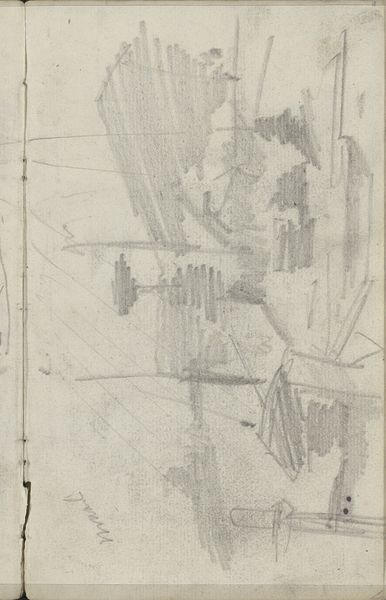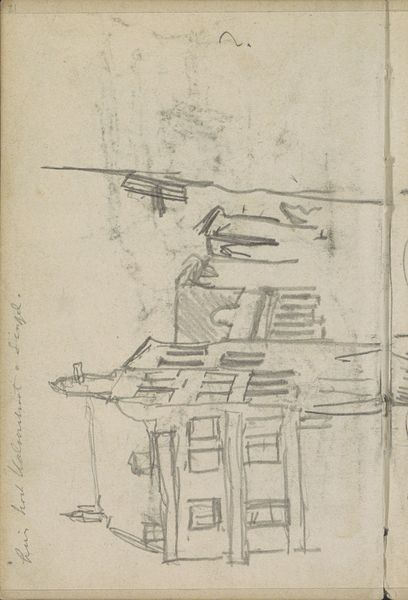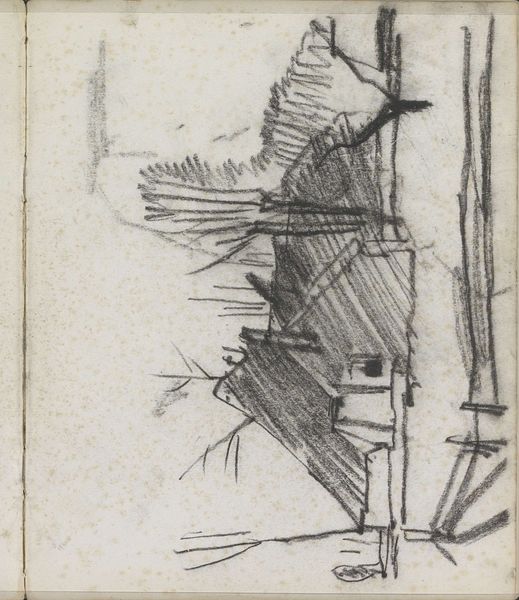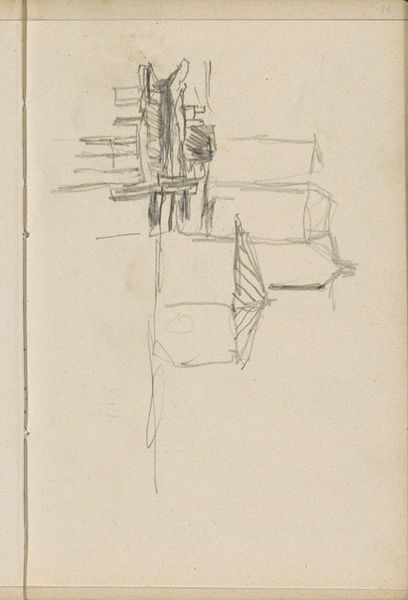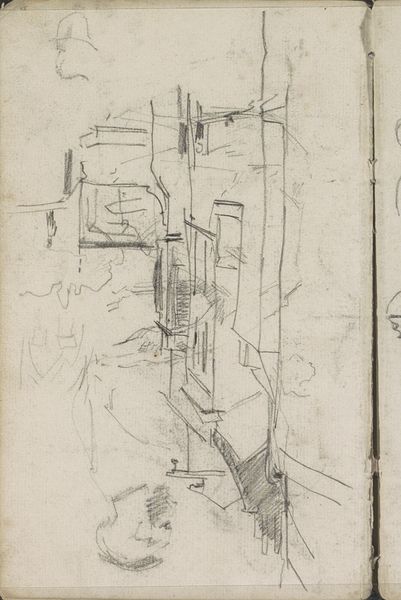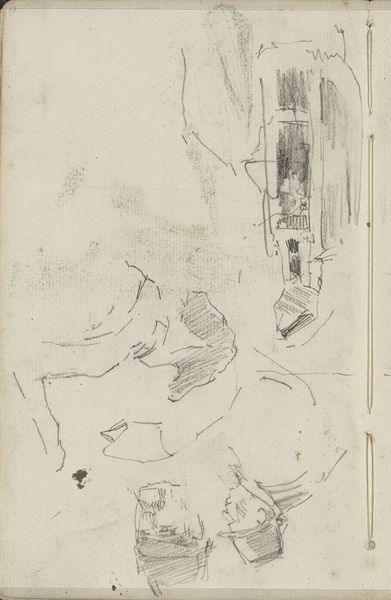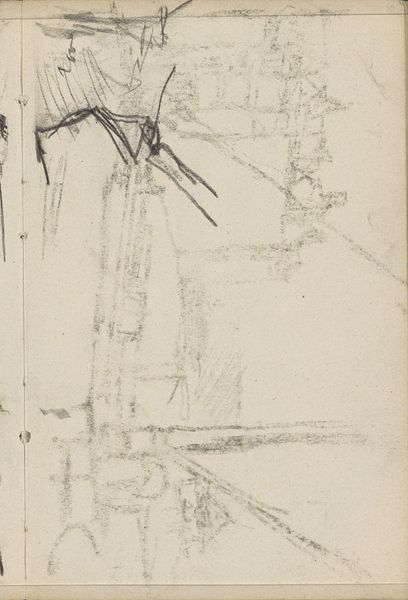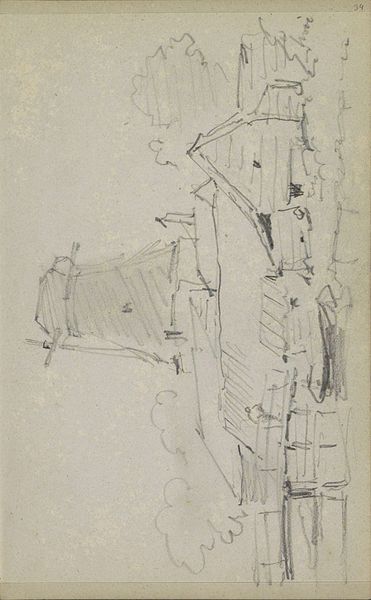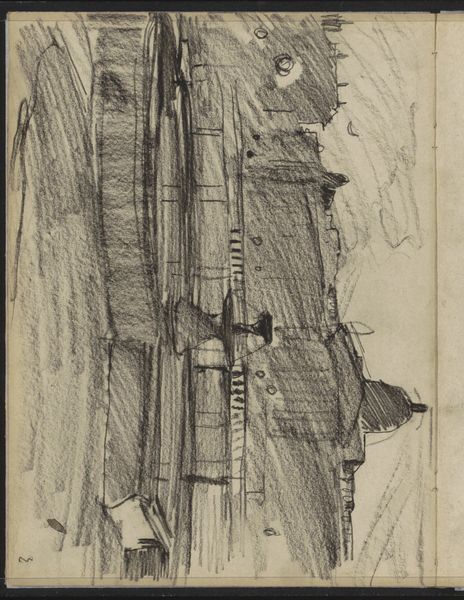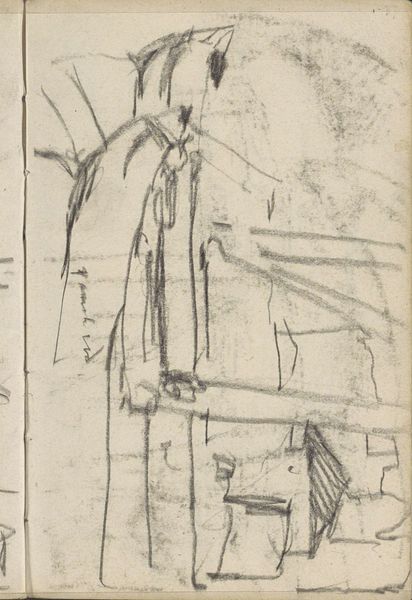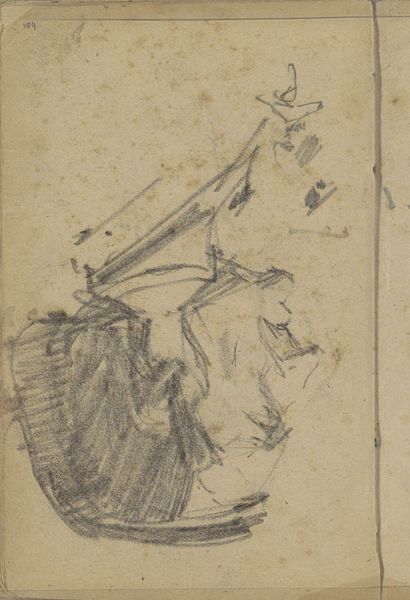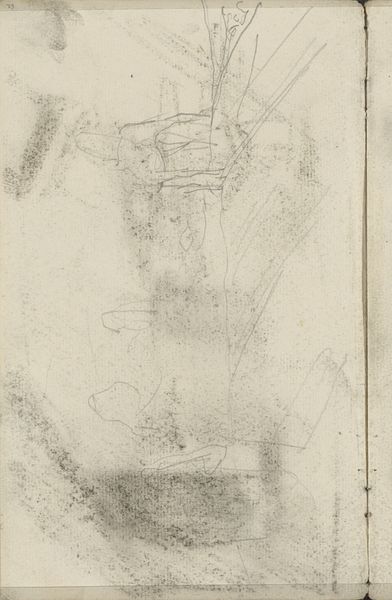
drawing, pencil
#
drawing
#
impressionism
#
landscape
#
figuration
#
pencil
#
line
Copyright: Rijks Museum: Open Domain
Editor: This pencil drawing, Figuren, mogelijk in een interieur, created by George Hendrik Breitner between 1881 and 1883, intrigues me. It feels like peering into a memory, a fleeting moment captured in hazy lines. What draws your eye when you look at this work? Curator: The beauty here lies in the incompleteness, doesn’t it? The sketch's openness invites projection. Breitner, known for his cityscapes, uses figuration to hint at interiority, both literally and figuratively. Consider the lines – they aren't just descriptive but evocative. What feelings do those sketchy lines conjure in you? Do you see anxiety? Intimacy? A world in formation? Editor: I definitely see the anxiety in the lines, and maybe the artist's uncertainty? Is this kind of ambiguity common in Breitner's figuration, to use form to suggest the psychological states of his figures? Curator: Precisely! And think about the historical context: the late 19th century, a period grappling with rapid industrialization and societal shifts. How might this "interior," seemingly mundane, reflect those larger anxieties about privacy, identity, and the changing social landscape? The unfinished quality becomes a potent symbol of that era's unresolved tensions. We read these anxieties not only into but from the composition itself, how lines don't meet and shading obscures the supposed "truth" of what we're seeing. Editor: That's fascinating. I hadn't considered the connection between the incomplete nature of the drawing and the anxieties of the time. It adds a whole new layer of meaning to what I initially perceived as just a quick sketch. I realize how much I was missing! Curator: Absolutely. It demonstrates how deeply art reflects and shapes cultural memory. What appears incomplete to our modern eyes might once have offered insight, or simply raised awareness for its contemporary audiences, offering us symbols, which may hold truths long after faces have faded from the present.
Comments
No comments
Be the first to comment and join the conversation on the ultimate creative platform.
